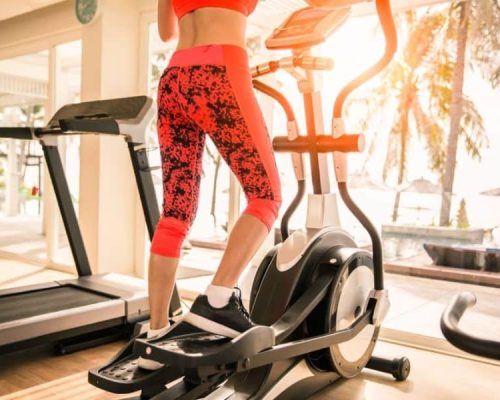Understanding Intermittent Fasting
What’s Intermittent Fasting All About?
Intermittent fasting (IF) means alternating between chow-down time and chill-out time. It’s different from your usual diet ‘cause it’s not about what hits your plate, but when it does. Some folks fast using these ways:
- 16/8: Fast for 16 hours, then eat in another 8 hours. Easy as pie – or maybe not if you love pie!
- 5:2: Eat normally for five days, then cut back to 500-600 calories on the other two.
- Eat-Stop-Eat: Do one or two 24-hour fasts each week.
Every person’s vibe is different, so tweak it the way you like! For more fun with schedules, our intermittent fasting schedule guide has got you covered.
The Perks of Intermittent Fasting
Jumping on the IF wagon can mean big wins. Whether dropping some pounds or upping your health game, IF could be that sidekick you need. Here’re the big wins:
-
Weight Loss: With less time to nosh, you might find yourself munching on fewer bite-sized goodies, which helps in losing weight and better blasting fat off (Healthline). Curious about how this works? Check our intermittent fasting weight loss write-up.
-
Metabolic Boost: Worry less about blood sugar and insulin woes! It might even cheer up your heart and cut down the risk of disease with habitual fasting (Healthline).
-
Live Longer: Some say The Grim Reaper may need to wait – IF might add years to your life at a cellular level, minus the scary sci-fi effects (Healthline). Our peek at intermittent fasting and autophagy might leave you intrigued.
-
Shape Up: It could keep your muscles intact while giving your body a makeover without lacking energy for hitting the gym (PubMed)!
So, if it’s fat you’re after losing or muscles you’re into keeping, IF claims a shot at both. Fancy a meal plan? Check our intermittent fasting meal plan.
Grasping the fast rules means you’re all set to slot IF into your daily grind. For in-depth tips and beginner-friendly tidbits, sail over to our beginner’s guide to intermittent fasting.
Exercising During Intermittent Fasting
Mix these two like a pro: skip breakfast and smash your workout—it could be the winning combo for weight loss and better health. But hey, knowing what happens inside when you’re working out on an empty stomach is key.
Effect of Fasting on Muscle Breakdown
Going beast mode without food in ya might mean using muscle for energy. Not great if you’re looking to flex those biceps, huh? This can zap your energy and mess with your performance in the gym. But, surprise! Some smart folks with lab coats found that not eating, a.k.a. intermittent fasting, doesn’t actually mess up your heavy lifting game all that much. Especially for those fasting athletes during times like Ramadan who still manage to keep going strong.
| Potential Effects of Fasting During Exercise | Impact |
|---|---|
| Muscle Breakdown for Protein | Goes up |
| Energy Levels | Takes a dip |
| Exercise Performance | Might get sluggish |
| Resistance Training Impact | Not much change |
Energy Source During Workouts
Sweating it out on an empty belly forces the body to torch that fat since your carb bank (glycogen) is on empty. Hell yeah, bye-bye fat! But watch out, because your body might start nibbling on your muscles for fuel, leaving you feeling more “couch potato” than “go-getter.” Also, doing this fasting plus exercise thing long-term could slow down your get-up-and-go thanks to low calories and energy reserves.
Experts want to dig deeper into this and see what happens when you adjust how long you fast, like those who fast overnight. If you’re curious about the bigger picture, check out the cool not-boring science on the benefits of fasting.
Want to ace this fasting and exercise gig? Tailor it to your goals and keep an eye on how you feel. Wanna know more about when to fast and how to eat? Peek at our guides on planning your fasting times and yummy meal ideas.
Optimizing Workouts with Intermittent Fasting
Mixing your workouts with intermittent fasting could be your secret weapon for dropping pounds and staying healthy. To get the most bang for your buck, let’s look at some smart tips on when and what to eat.
Timing Strategies for Workouts
When you choose to sweat it out can really crank up the gains. Registered dietitian Christopher Shuff has a few tricks up his sleeve. Depending on your vibe, you can either pump iron before, during, or after eating—whichever fits your lifestyle and goals better.
Exercise Before Eating
- Best for: High-Intensity Interval Training (HIIT) or cardio.
- Benefit: Burns that stored fat away.
- Caution: You might need to chill a bit more to avoid burning out.
Exercise While Eating
- Best for: Lifting those heavy weights.
- Benefit: You’ll have energy galore.
- Caution: Time it with your chow for the best oomph.
Exercise After Eating
- Best for: Taking it slow with a low-key workout.
- Benefit: Foods kick in to help you bounce back.
- Caution: Watch out for those energy lows.
Tweak your fasting routine to match your gym schedule so you can hit those targets.
| Workout Timing | Benefits | Cautions |
|---|---|---|
| Before Eating | Burn more fat | Need more rest? |
| While Eating | Boosted energy | Get your meals right |
| After Eating | Recover with nutrients | Watch energy slumps |
Importance of Post-Workout Nutrition
What you munch on after busting a sweat is key to bouncing back and getting stronger. Dr. Niket Sonpal emphasizes syncing your munch-time with gym-time. This way, you’re making sure your muscles get the TLC they deserve.
Key Nutrients Post-Workout
- Protein: Helps repair and grow your muscles. Go for a protein-packed meal or shake.
- Carbs: Fill back up on the energy you spent. Think whole grains or a sweet potato.
- Fats: Helps you soak up those vital nutrients. Avocado toast, anyone?
Try to end your fast with a balanced feed to turbo-charge your recovery. Munch on protein after your morning run or have some carbs before that late-night gym sesh (Jubilant Rehab).
Here’s a quick chart to help nail your post-exercise meals.
| Time of Day | Meal Suggestion |
|---|---|
| Morning | Protein smoothie & scrambled eggs |
| Noon | Grilled chicken & quinoa salad |
| Evening | Fish fillet & baked sweet potato |
Balancing fasting with fitness isn’t just about the food—it’s about feeling your best. Keep tabs on your body so you don’t overdo or under-eat. For more tips, check out our piece on fasting and workouts.
Balancing Nutrition and Fasting
Juggling nutrition and fasting can make you feel like a circus performer spinning plates, but it’s totally doable! The trick is to keep protein intake, hydration, and electrolyte levels in check. Do this, and you’ll feel like a million bucks while working out.
Protein Intake and Muscle Health
You’re fasting and working out? Good on ya! But don’t skimp on protein—it’s the magic stuff keeping your muscles from throwing a tantrum. When you exercise on an empty stomach, your body might snack on your muscles for energy (Healthline). That’s where your post-workout protein hero swoops in to save the day.
Dr. Niket Sonpal advises planning your workouts during your eating windows. This way, you can gobble up some protein right after a heavy sweat session for muscle TLC.
| Protein Sources | Protein Content (grams) |
|---|---|
| Grilled Chicken Breast (3.5 oz) | 31 |
| Greek Yogurt (1 cup) | 10 |
| Eggs (1 large) | 6 |
| Lentils (1 cup cooked) | 18 |
| Almonds (1 oz) | 6 |
Got questions about meal planning? Hit up our intermittent fasting meal plan for the full scoop!
Hydration and Electrolyte Balance
Water, water, everywhere, and you’d better drink your share! Dehydration is like kryptonite to your energy and gym prowess. So, keep that H2O flowing, friend.
But wait—there’s more! When you sweat like a champ, your body loses its stash of essential electrolytes, namely sodium, potassium, and magnesium. These need a top-up, or you’ll feel like an over-squeezed lemon.
| Electrolyte | Sources |
|---|---|
| Sodium | Salt, Broth, Pickles |
| Potassium | Bananas, Potatoes, Spinach |
| Magnesium | Nuts, Seeds, Whole Grains |
Keep your hydration and electrolytes balanced to keep your energy up and avoid muscle grumbles during a workout. Want more refreshing tips? Swing by our quirky article on balancing hydration at tips for straightening curly hair.
Dialing in your nutrition and fasting game will help you get the most out of combining intermittent fasting for fat loss and exercise. And hey, listen up: your body’s the boss. Change your eating and hydration habits based on how you’re feeling, and you’ll stay in top shape. Cheers to making healthy a habit!
Long-Term Considerations
Wrapping your head around the long haul effects of mixing intermittent fasting with exercise is essential for keeping that wellness train chugging. Here’s some stuff to chew on.
Metabolism and Caloric Depletion
When you jump into the combo of fasting and working out, keeping tabs on your metabolism and calorie game is a must. Fasting can seriously chip away at your glycogen — think of it as your body’s carb piggy bank. This means you might lean on burning more fat during those sweat sessions(Healthline).
But, heads up—too little fuel over time can miss its mark. Priya Khorana, EdD, mentions that it might hit your metabolism with a slowdown and leave you feeling low energy. Bad news for your get-up-and-go and recovery, right? Finding your groove is key.
| Thing to Think About | What It Does |
|---|---|
| Glycogen Drop | More fat gets burned |
| Calorie Shortage | You might get sluggish |
| Energy Life | Less pep in your step |
Individual Preferences and Goals
Your vibes and goals are huge in meshing fasting with your fitness plan. Listen up — your body knows best. What clicks for one may not suit another.
Some folks feel like champs exercising when they’re running on empty, others need a meal first. Check out your energy swings and how you digest your meals.
Want to shed some pounds? This combo could be your ticket. But if you’ve got specific stuff going on, like intermittent fasting for women or dealing with the tricky stuff like type 2 diabetes, you’ll need to tweak things.
Playing around with different intermittent fasting schedules and tweaking your intermittent fasting meal plans might keep you locked on your intermittent fasting results highway.
By keeping an eye on the long game and customizing your plan, you’ll be able to boost the perks of fasting and exercise while keeping everything nice and balanced.
Combining Intermittent Fasting and Exercise
Mixing intermittent fasting and exercise can seriously up your health game. Let’s dive into what happens when you mash these two together and why listening to your body’s signals is key while you juggle both.
Buddy System Benefits
When you team up intermittent fasting with exercise, you get a blend that can seriously boost your fitness mojo. Here’s how they work together for some awesome outcomes:
- Burn Fat Fuel: Exercising before munching can make your body torch that stored fat for energy. It’s like teaching your body to run on its reserves instead of carbs.
- Better Blood Sugar Control: Both fasting and sweating it out improve how your body handles sugar, keeping those sugar highs and crashes in check.
- Growth Hormone Boost: Skipping meals now and then can bump up growth hormone levels, which is a big win for muscle growth and recovery.
- Cell Clean-Up: Fasting gets your body’s clean-up crew going, removing junky cells and making way for fresh ones. Paired with working out, you’re supporting your body’s health right at the cellular level.
Tune Into Your Body
Trying to balance skipping meals and hitting the gym? It’s all about paying attention to what your body’s saying. Here’s what you need to keep in mind:
- Plan Smartly: According to Dr. Niket Sonpal, it’s smart to work out during your eating times. That way, you’ve got the energy to crush your workouts. Think about breaking your fast with a protein-packed meal if you love morning sweats or fueling up on carbs before hitting that evening session.
- Watch Your Energy Gauge: As you get into this routine, notice how your energy levels are doing. If you’re dragging, dial down the workout intensity or when you get moving.
- Stay Hydrated: Don’t forget those water bottles and keep your electrolytes in balance, especially when skipping meals to avoid feeling like a dried prune.
- Refuel Right: Chow down on a meal packed with all the good stuff after workouts. Proteins, in particular, are your muscle’s best friend for repair.
Kickstart with our handy intermittent fasting schedule and make a plan that vibes with your lifestyle and goals.
Combining fasting and workouts might just be your ticket to smashing those health goals and feeling awesome. Tweak your routine to suit you and check out our guide on intermittent fasting perks to make sure you’re getting the most out of this dynamic duo.










